about the project
collection of gerrit Jan vos
General
Military personnel in the Second World War all wore uniforms made by the country for which they were fighting. Each country had its own style of uniform; for most people, the most recognisable and terrifying uniforms even today are those worn by the soldiers of Nazi Germany. The German uniforms were largely based on the Prussian-style uniforms which were worn from the 19th century onwards. When we think of uniforms from the Second World War, we readily picture German uniforms with swastika armbands.
After Adolf Hitler came to power, Germany was transformed into a totalitarian state. Uniforms became the norm for civilian and military dress. The Nazis preferred an expressive style, giving German citizens a sense that they were not ordinary citizens but part of a greater whole, a national entity.1
As most people are aware, Hugo Boss was a designer and maker of German uniforms between 1933 and 1945. With just a few sewing machines at his disposal, Hugo Boss joined the National Socialist German Workers’ Party (NSDAP), or Nazi Party in 1931, a move which led to a substantial increase in sales of his clothing. Hugo Boss was one of the official uniform suppliers for Nazi Germany, making uniforms among others for Hitler’s early bodyguards, or protection squadrons (the Leibstandarte SS Adolf Hitler), a duty which was subsequently continued by the Schutzstaffel (SS), the NSDAP, Sturmabteilung (SA) and the Hitler Youth (a sort of paramilitary scouting movement). Up to the end of the War, Boss used around 180 forced labourers and prisoners of war from different countries to produce Hitler’s uniforms. After the Second World War, Boss was punished for his activities for and his ties with Nazism.2
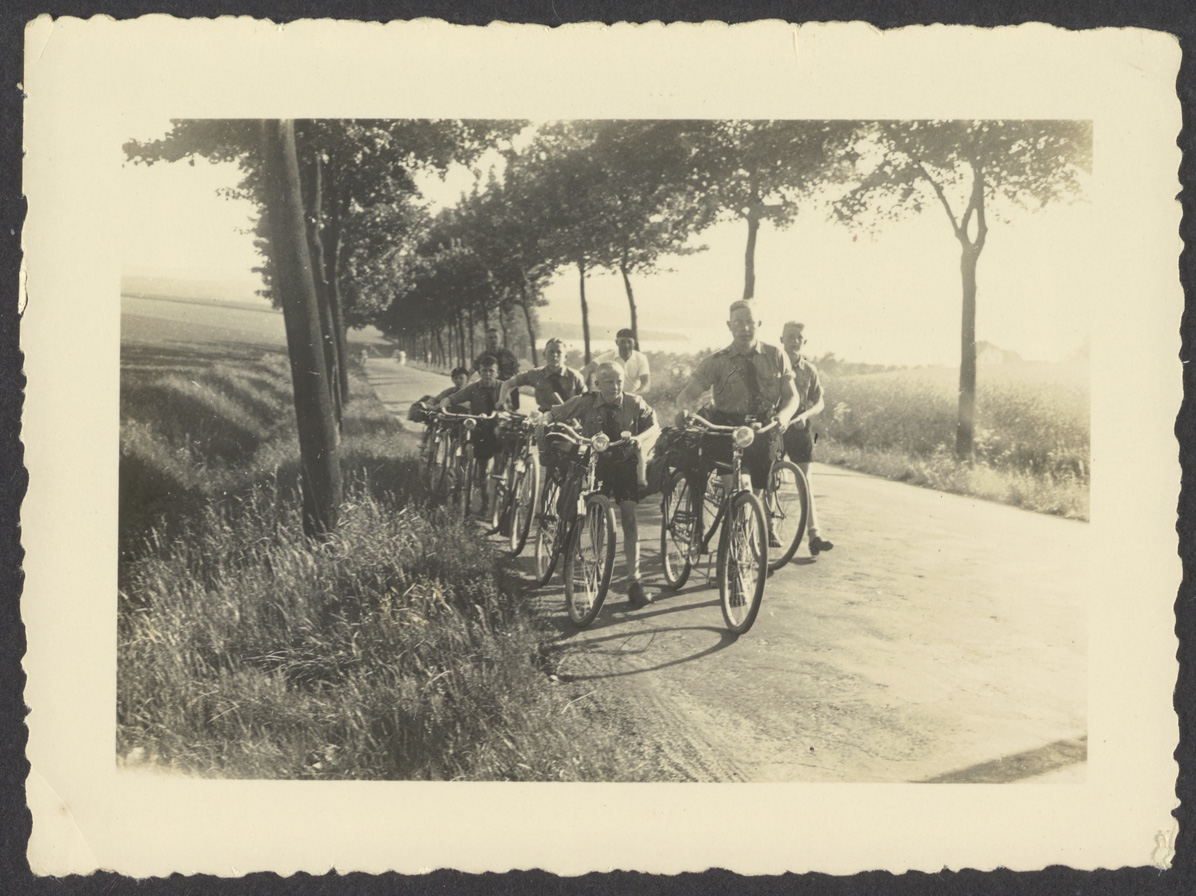
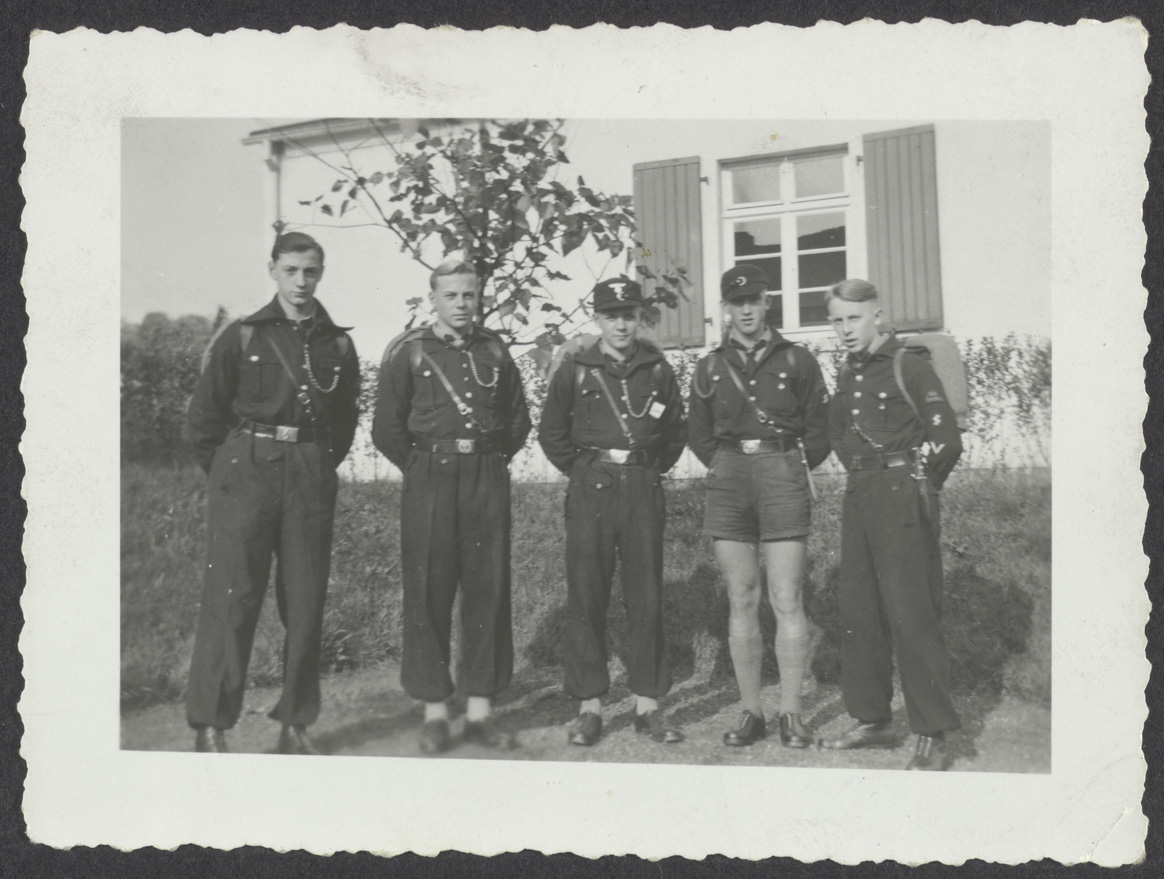
Although the different German uniforms closely resembled each other, they were not identical across the German forces. Soldiers could have their own uniforms made by their own preferred tailor, provided they complied with certain standards. In addition to a swastika, many German uniforms bore the image of an eagle, often depicted holding the swastika in its talons. On political emblems, the eagle is always shown looking to the left, but for military uniforms it is always shown looking to the right. This created a clear distinction between political and (para)military organisations.
The NSDAP, SS and the Wehrmacht all had special white uniforms which could be worn in the warmer months, between April and October. Two versions were available:, with a jacket bearing either a single or a double row of buttons. These jackets could be worn with the matching white trousers or with black trousers, and a matching white cap. The uniforms were virtually identical; the jacket with a double row of buttons was mainly worn by the Navy.
Political organisations
It was not just members of the armed forces who wore uniforms in Nazi Germany; uniforms were also worn in paramilitary organisations and even in political circles.
NSDAP (National Socialist German Workers’ Party (Nationalsozialistische Deutsche Arbeiterpartei))
In the early days of the NSDAP there was no standard uniform, and party members often wore paramilitary uniforms, with a particular fondness for the brown SA shirt during party rallies. The party organisation gradually improved, and the first official uniforms were created in around 1930. These official uniforms comprised a brown shirt or jacket, brown trousers and various insignia. New regulations were introduced in 1932, resulting in the creation of braided shoulder boards and collar insignia, making the NSDAP uniforms clearly distinguishable from the SA uniforms
The NSDAP was divided into different ‘levels’, or departments, each with its own insignia:
Ortsgruppen
(local level: villages and towns)
Kreisleitung
(district level: provinces)
Gauleitung
(regional level: states and provinces)
Reichsleitung
(national level)
The members of these departments held different ranks, with each rank having its own shoulder boards, collar insignia and armband. Adolf Hitler, along with a few of the most senior party leaders (such as Joseph Goebbels) did not wear specific or distinctive insignia, often wearing a standard brown jacket with black or brown trousers, together with their party badge and standard NSDAP armband.
SA (Sturmabteilung) (Brownshirts))
The SA uniform was one of the best-known in Nazi Germany. It was light-brown, with a red swastika armband on the left sleeve. The SA uniforms closely resemble the NSDAP uniforms, which consisted of a brown jacket, brown trousers and various insignia. SA uniforms can be recognised by the specific insignia they bore.
The SA, or Sturmabteilung (also referred to as Brownshirts) was a paramilitary group founded by Adolf Hitler in 1921 with the role of protecting NSDAP party rallies against political opponents. Its tactics included intimidating those political opponents.
In the eyes of the NSDAP, the SA was a meeting place for homosexuals. Although formally strongly rejected and even actively combated during the Nazi regime, it was indeed the case that the leadership of the SA contained a fairly large number of homosexual men, and its leader Ernst Röhm is himself thought to have been a homosexual.
SS (Schutzstaffel)
The SS often evokes images of black uniforms with red swastika armbands and highly polished black boots. While this was indeed sometimes the case, it did not apply for all SS uniforms. There were different branches and even organisations within the SS, each with its own uniform. The SS uniform was designed to impress, to convey an aura of power and reflect the fact that the SS was the elite unit within the NSDAP. The SS was thus not part of the German army, although this changed as the War progressed. The primary responsibilities of the SS included guarding the concentration camps.
One of the divisions within the SS was the Leibstandarte, which served as Hitler’s personal bodyguard. This SS division predominantly wore black uniforms with a red swastika armband on the left sleeve. These are the Nazi uniforms that we often see in documentaries and videogames.3
Reflecting their status as an elite unit, the SS uniforms bore an eagle of a different design, though still often white or silver in colour. The SS eagle was more angular and had a more aggressive, dangerous appearance than the eagles worn in the air force and the army, for example. It was also not worn on the chest, but on the left arm, on f the biceps.
Although the German Red Cross was not a political or military organisation, it came under the auspices of the SS, and its members also wore uniforms. When at the front they mainly wore medical dress, while on the ‘home front’ their uniforms were distinguished by their grey/blue colour with large white collars bearing a red cross and a white armband with a red cross on the left sleeve. They wore grey or white caps bearing a round white badge with a red cross.
Reichsarbeitsdienst (Reich Labour Service, RAD)
The Reich Labour Service, (RAD) was established by Nazi Germany to combat unemployment. It was deployed in numerous civil, military and agricultural projects. The RAD uniform consisted of a brown jacket and trousers with an insignia on the left sleeve depicting an inverted shovel with a number designating the unit to which the wearer belonged. A red swastika armband was also frequently worn on the left arm.
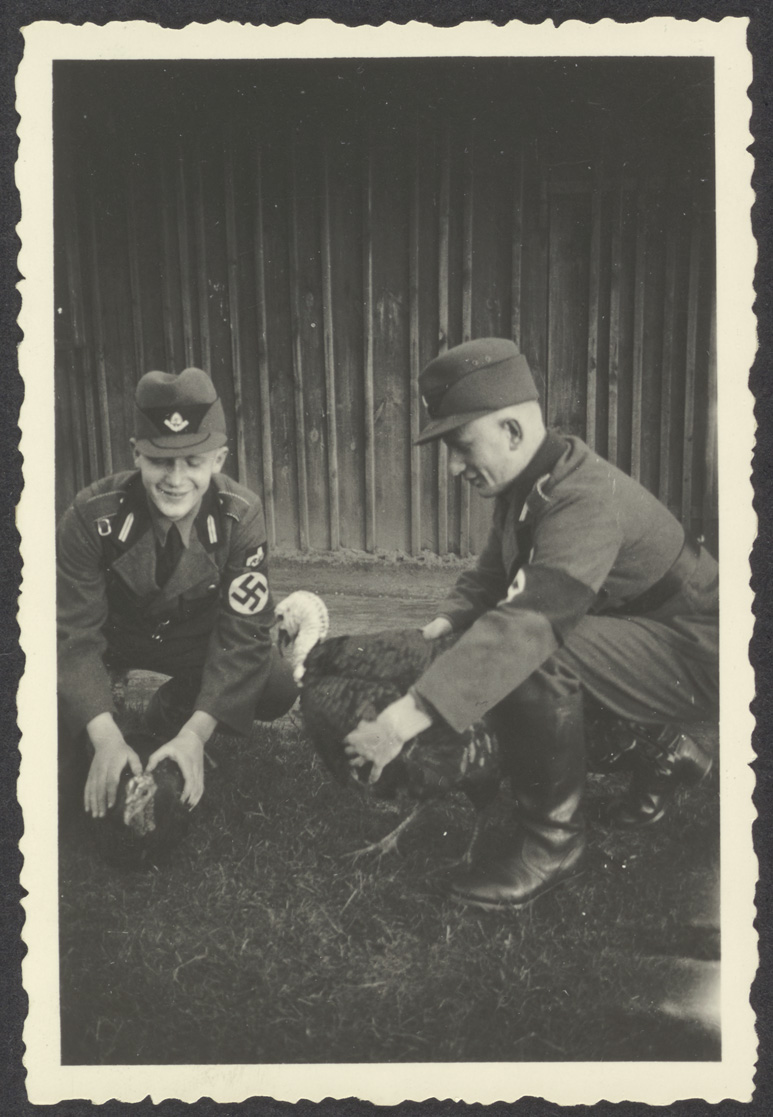
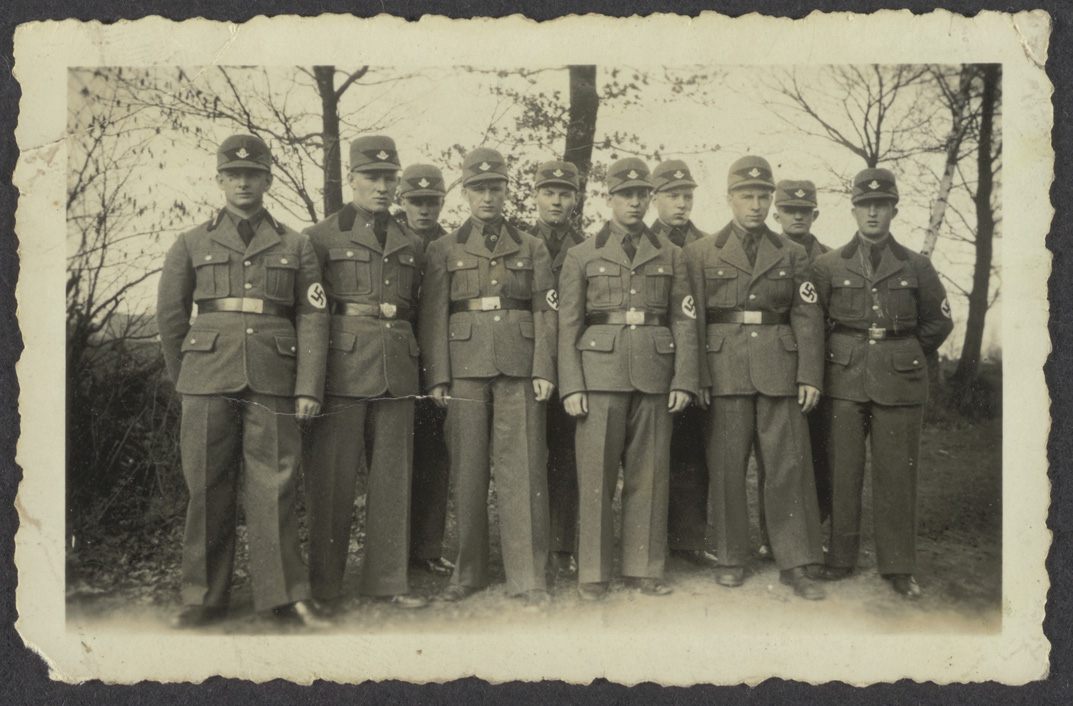
Police/military police
The German police predominantly wore green uniforms, both jacket and trousers. They wore an eagle with a swastika on the left arm. There were several divisions within the police, such as the civilian police and the military police. Each division wore an eagle of a different colour: for the military police (Feldgendarmerie) it was orange, for the civilian police (Schutzpolizei) green and for the fire service (Feuerloschpolizei) red.
Divisions within the armed forces
There were many differences in the uniforms worn across the German armed forces. During training and exercises, for example, military personnel would often wear white uniforms made from drillich, a denim-like material. These uniforms had fewer characteristic features, and generally bore no insignia, though in some cases training bands were worn on head coverings when drilling in certain tactics.
Although uniforms were not identical across the German armed forces, the different uniforms did resemble each other very closely. They could however be distinguished reasonably easily from the details. The different emblems worn on the uniforms showed the branch or division of the armed forces to which the soldier belonged. But what were the precise differences between the army, air force, navy and SS?
Army
Soldiers in the German army war a static eagle on the right breast, often white/silver in colour. The standard uniforms were very like the uniforms that had been worn since the 1920s in the Reichswehr.
The colour of the uniforms was field grey (Feldgrau). There was a row of five buttons on the front of the uniform, compared with eight on the earlier uniforms. The jacket was worn with grey trousers, belt and cap or helmet. Ranks were designated by insignia on the collar; NCOs and officers had more decorative insignia.
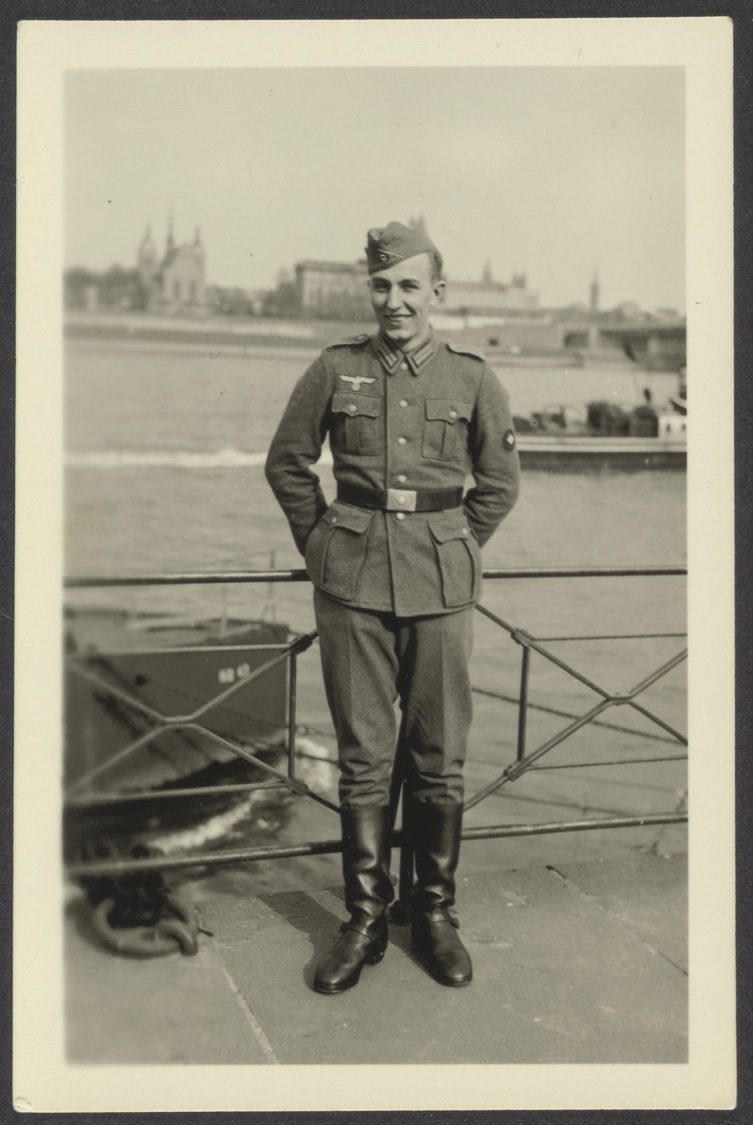
Mountain rangers (Gebirgsjäger) were recognised by an extra insignia worn with the standard army uniform: an Edelweiss flower worn on the right sleeve or cap.
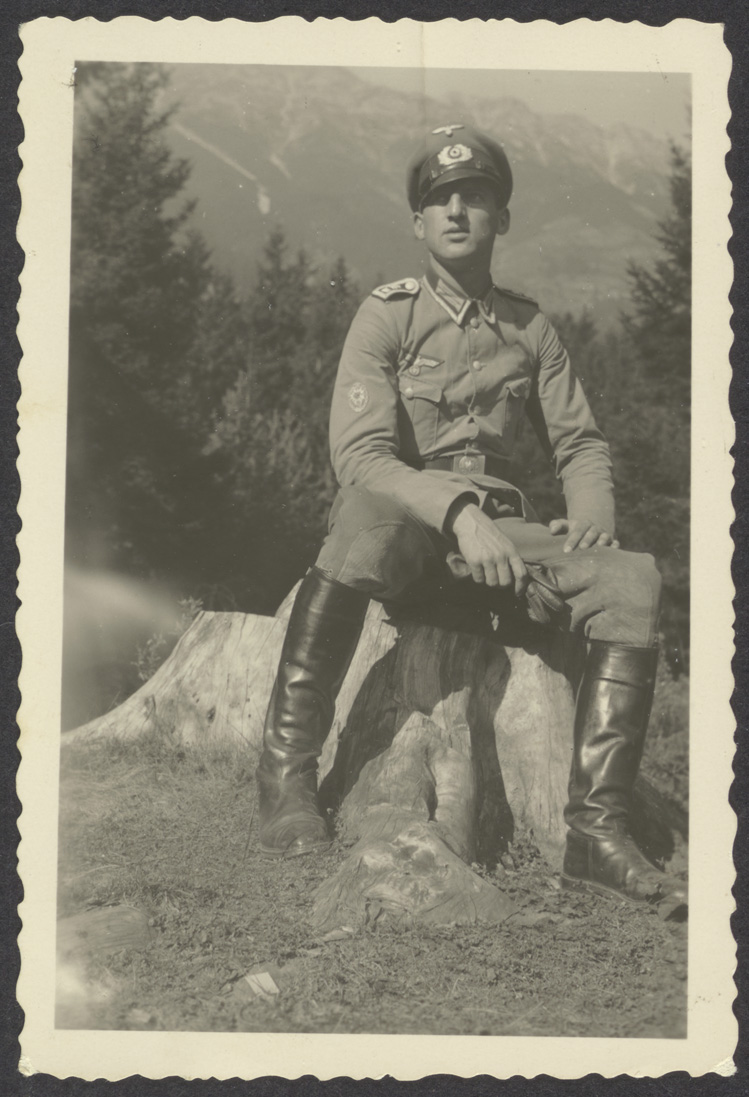
In addition to the standard uniforms, Panzer troops also wore black double-breasted coats, which were easier to manage in the confined interior of tanks. There were also different army uniforms depending on the weather conditions. In the winter, they wore thick (sometimes camouflaged) jackets and trousers, while in the tropics they wore olive or yellow/khaki uniforms with a tropical helmet or cap.
Air force
Members of the German air force (Luftwaffe) wore uniforms distinguished by the emblem of an eagle in flight. This eagle was also white/silver in colour.
The standard uniform consisted of a blue-grey jacket with open collar and four pockets with flaps, a light blue shirt and dark blue tie, blue-grey trousers, black leather boots and a blue-grey cap or Stahlhelm (steel helmet). Rank was indicated by insignia on the collar patches, with NCOs and officers having more decorative insignia. The collar insignia resembled birds to show that the wearer was a member of the air force. Different colours for the collar insignia showed which division of the air force the wearer belonged to, for example pilots, ground staff, air defence or a medical branch.
The flying suit usually consisted of a beige jumpsuit, a leather flying helmet and thick, fur-lined boots. The Fliegerbluse was a popular clothing item: a blue-grey jacket with a row of buttons concealed beneath a flap, designed to be worn within the confined space of an aircraft.
Like the army, the air force also had white summer uniforms. They were virtually identical to the army uniforms, though as with the standard uniforms, the eagle was shown in flight rather than static.
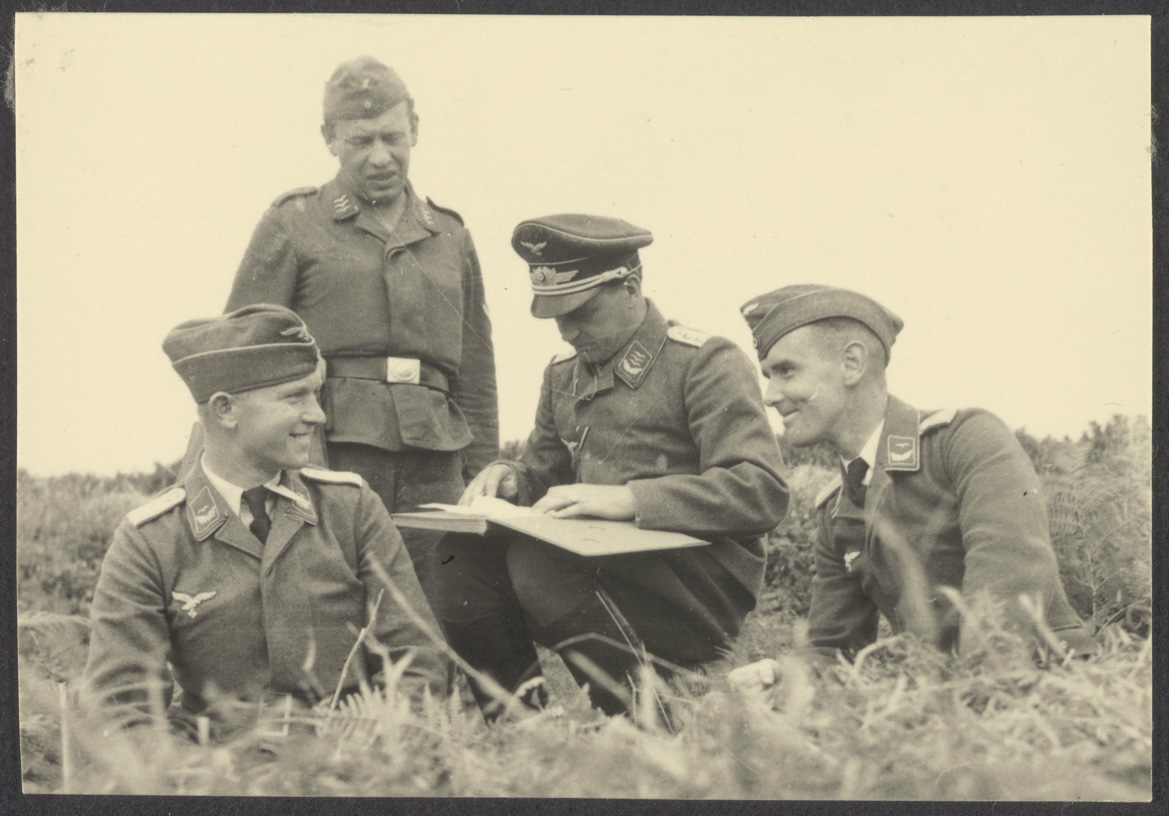
Navy
Like the army, the navy (Kriegsmarine) uniform had a more static eagle on the right breast. This eagle was not white/silver as in the army, but often yellow/golden. Navy uniforms sometimes also bore anchors emblems, showing clearly that this is a navy uniform. Navy uniforms frequently carried brass or glass buttons; salt-laden seawater oxidised other metals more quickly, and using glass buttons meant the uniforms lasted longer.
The dress uniform, largely worn by officers and NCOs, consisted of a navy-blue dress jacket with a double row of buttons, worn with a white sword belt, medals on the chest and large epaulettes. For standard dress on board navy vessels, serving sailors wore a jacket with limited medals and insignia to show whether they were ordinary seamen or NCOs. A thicker overcoat was worn in bad weather. There was also a special uniform for use in warm and tropical climates. These uniforms were khaki or white in colour.
Submarine crew often wore a leather jacket because of the more arduous conditions at sea. Ordinary seamen always wore a dark blue cap, unlike the captain of the vessel, who wore a white cap to make clear that he was the captain.
Navy personnel who were assigned to a land base, including coastal artillery, wore a grey-green uniform in the same style as the German army uniform. It was worn with a closed collar with collar patches and epaulettes on the shoulder.
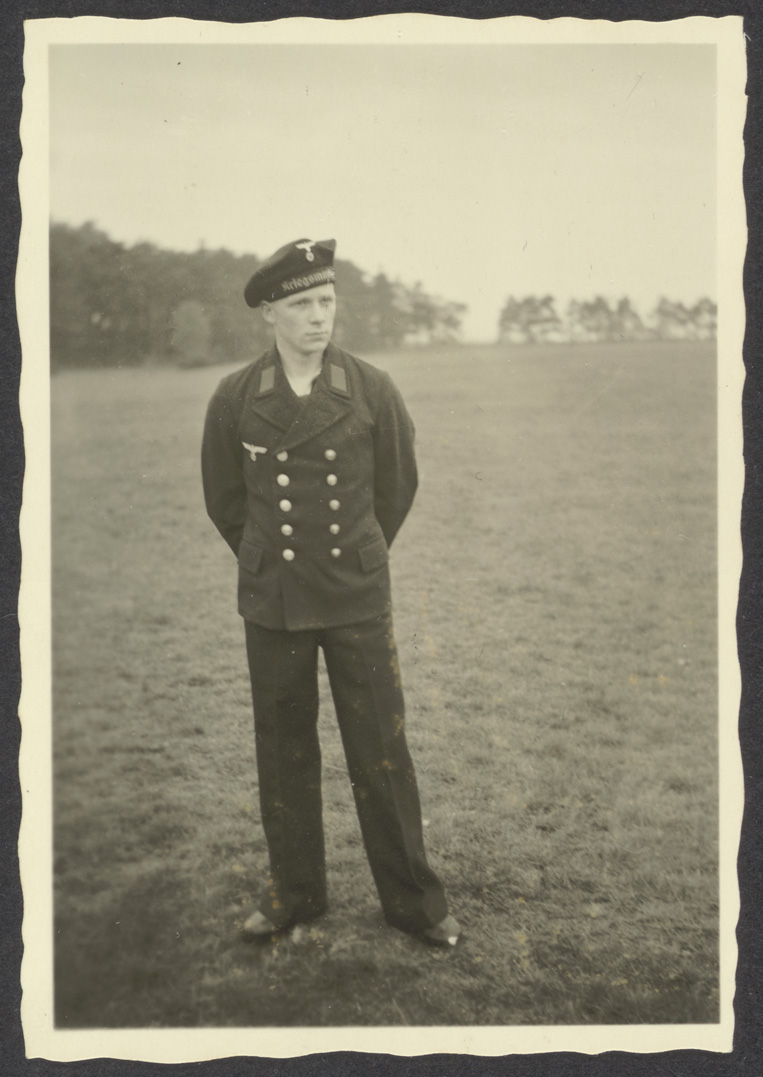
- https://www.encyclopedia.com/fashion/encyclopedias-almanacs-transcripts-and-maps/nazi-style
- https://medium.com/s/aesthetics-of-evil/nazi-chic-the-style-that-just-wont-go-away-f886cd58e38a
- https://nl.wikipedia.org/wiki/Schutzstaffel#:~:text=De%20Schutzstaffel%20(Nederlands%3A%20beschermingsafdeling),Nationaalsocialistische%20Duitse%20Arbeiderspartij%20(NSDAP)
